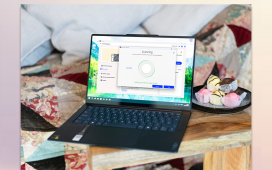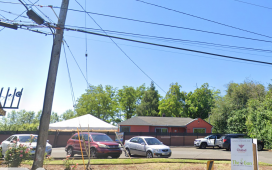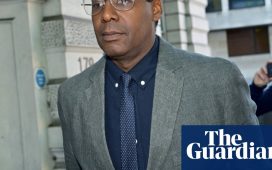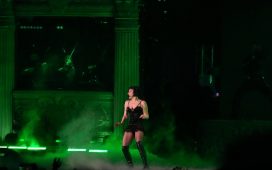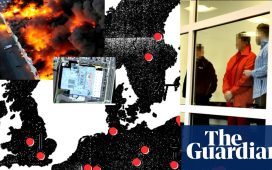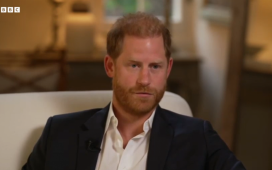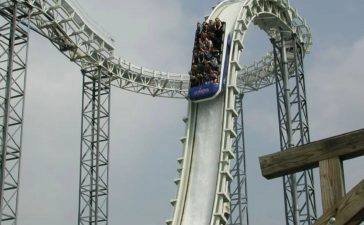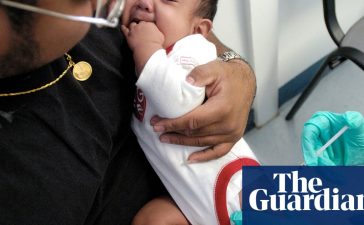Pope Leo XIV is officially opening his pontificate in a ceremony Sunday that blends ancient ritual, evocative symbols and a nod to modern-day celebrity, all in front of the presidents, princes and tens of thousands of people expected to pack St. Peter’s Square to celebrate history’s first American pope.
Leo will start the day by taking his first tour through the piazza in the popemobile. The open-topped vehicle has become synonymous with the papacy’s global reach and mediatic draw, used at home and abroad to bring popes close to their flock.
It was here that Pope Francis took his last popemobile ride on Easter Sunday, and it was on the back of a modified popemobile that Francis’ casket was brought across Rome last month to its final resting place.
Leo, the 69-year-old Chicago-born Augustinian missionary, seems a bit more timid than Francis. But all eyes will be on how he manages the throngs of pilgrims, tourists and curiosity-seekers, and the babies who will inevitably be passed up to him for him to bless.
After the festive public tour in the square, Leo goes into the basilica to begin the solemn ceremony to inaugurate his ministry in a series of rites that emphasize the service that he’s called to offer to lead the Catholic Church. He prays first at the tomb of St. Peter, considered to be the first pope, under the basilica’s main altar and then processes out to St. Peter’s Square for the Mass.
Strict diplomatic protocol dictates the seating arrangements, with both the United States and Peru getting front-row seats thanks to Leo’s dual citizenship. U.S. Vice President JD Vance, a Catholic convert who tangled with Francis over the Trump administration’s mass migrant deportation plans, is leading the American delegation along with U.S. Secretary of State Marco Rubio.
Peruvian President Dina Boluarte is one of around a dozen heads of state attending, including Ukrainian President Volodymyr Zelenskyy.
During the Mass, Leo will receive the two potent symbols of the papacy: the lambswool stole, known as a pallium, and the fisherman’s ring. The pallium, draped across his shoulders, symbolizes the pastor carrying his flock as the pope carries the faithful. The ring, which becomes Leo’s official seal, harks back to Jesus’ call to the apostle Peter to cast his fishing nets.
The other symbolically important moment of the Mass is the representational rite of obedience to Leo: Whereas in the past all cardinals would vow obedience to the new pope, more recent papal installations involve representatives of cardinals, bishops, priests, deacons, nuns, married couples and young people participating in the rite.
In the days since his historic election, Leo has already sketched out some of his key priorities as pope, emphasizing a message of peace, so it’s not known if he’ll use his installation homily as a mission statement as some of his predecessors did.
In his Oct. 22, 1978 installation homily, St. John Paul II uttered a phrase that became something of a refrain of his pontificate and the ones that followed: “Be not afraid! Open wide the doors to Christ!”
Pope Benedict XVI quoted his predecessor during his installation homily, on April 25, 2005, and offered a meditation on the symbols of church unity represented by the pallium and fisherman’s ring. Francis’ installation homily, on March 19, 2013, focused on the need to protect the environment, an early hint of what would become one of the priorities of his pontificate.
Leo has vowed all efforts to find peaceful ends to the wars in Ukraine, Gaza and elsewhere. But as a priority, he has also identified the challenges to humanity posed by artificial intelligence, making the parallel to the challenges to human dignity posed by the industrial revolution that were confronted by his namesake, Pope Leo XIII, who was pope from 1878-1903.
After the homily and at the end of the Mass, Leo will offer a final blessing and then go into the basilica to greet the heads of the more than 150 official delegations attending.
Security is expected to be tight, as it was for Francis’ funeral on April 26, which drew an estimated 250,000 people. Rome authorities are planning for another 250,000 on Sunday. The piazza and main boulevard leading to it, and two nearby piazzas have been set up with giant television screens, and dozens of portable toilets have been erected in a nearby park.
___
Associated Press religion coverage receives support through the AP’s collaboration with The Conversation US, with funding from Lilly Endowment Inc. The AP is solely responsible for this content.

